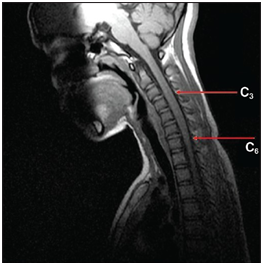Neuromyelitis Optica Causes, Symptoms, Diagnosis and Treatment

What is Neuromyelitis Optica?
Neuromyelitis Optica (NMO), previously known as Devic’s disease, is a central nervous system disorder that primarily affects the eye nerves (optic neuritis) and the spinal cord (myelitis). Now known in broader terms as neuromyelitis optica spectrum disorder, NMO occurs when your body’s immune system reacts against its own cells in the central nervous system, mainly in the optic nerves and spinal cord, but sometimes in the brain.
Causes of Neuromyelitis Optica
Neuromyelitis Optica is an autoimmune condition, which means a person’s immune system (the body’s natural defence against illness and infection) reacts abnormally and attacks the body’s tissues and organs.
An antibody against a protein called aquaporin-4 is present in the blood of up to 80% of people with NMO.
Antibodies are proteins produced by the body to destroy disease-carrying organisms and toxins.
In NMO, the immune system attacks aquaporin-4 which damages the myelin sheath (the protective layer that surrounds nerve cells in the brain and spinal cord and helps transmit nerve signals).
Symptoms of Neuromyelitis Optica
A symptom is something the patient feels and reports, while a sign is something other people, including a doctor or nurse may detect. For example, pain may be a symptom while a rash may be a sign. Signs and symptoms of neuromyelitis optica (Neuromyelitis Optica) vary according to many factors, including the type of NMO the patient has. Typically, a person with NMO will have at least one episode of optic neuritis and transverse myelitis.
Signs and symptoms of optic neuritis include (ON):
- The optic nerve becomes inflamed
- Loss of eyesight, which affects at least one eye. In most cases this is temporary; however, there is a risk of permanent vision loss, which is exacerbated by heat or exercise.
- Swelling of the optic disc.
- Pain in the eye. The pain generally worsens with movement. Pain becomes more intense after about one week, and then goes away after a period of days.
- The eyes become less sensitive to colors.
- Patients who develop optic neuritis may have problems driving a vehicle.
Signs and symptoms of transverse myelitis (TM):
- The spinal cord becomes inflamed
- Back pain
- Neck pain
- Shooting sensations in the limbs and abdomen
- Below the affected area of the spinal cord the patient may have altered sensations, with sensitivity to cold/heat, numbness, tingling, and a sensation of coldness or burning.
- Limbs may become weak. Some patients may describe their limbs as feeling heavy, while others may develop total paralysis.
- Urinary incontinence
- More frequent urination
- Difficulty urinating
- Fecal incontinence (bowel incontinence)
- Constipation
- Difficulty in completely emptying the bowels
Diagnosis of Neuromyelitis Optica
Neuromyelitis Optica is not an easy condition to diagnose because it presents signs and symptoms which are often similar to those found in other diseases, such as:
- MS (multiple sclerosis)
- ADEM (acute demyelinating encephalomyelitis)
- SLE (systemic lupus erythematosis)
- MCTD (mixed connective tissue disorder)
- Some inflammations caused by viruses
- Paraneoplastic optic neuropathy (inflammation linked to cancer)
The doctor will have to carry out some tests to rule out the above-mentioned conditions.
- Blood test
- Lumbar puncture test (spinal tap)
- MRI (magnetic resonance imaging (MRI) scan
Treatment of Neuromyelitis Optica
There is no cure for Neuromyelitis Optica (NMO) at this time, and no medications have been specifically approved to treat it. The standard of care for an initial attack of NMO includes the following:
- Intravenous (into the vein) high-dose corticosteroids (methylprednisolone)
- Plasma Exchange (PLEX)
- Mycophenolate mofetil (CellCept)
- Rituximab (Rituxan)
- Azathioprine (Imuran, Azasan)
By : Natural Health News




